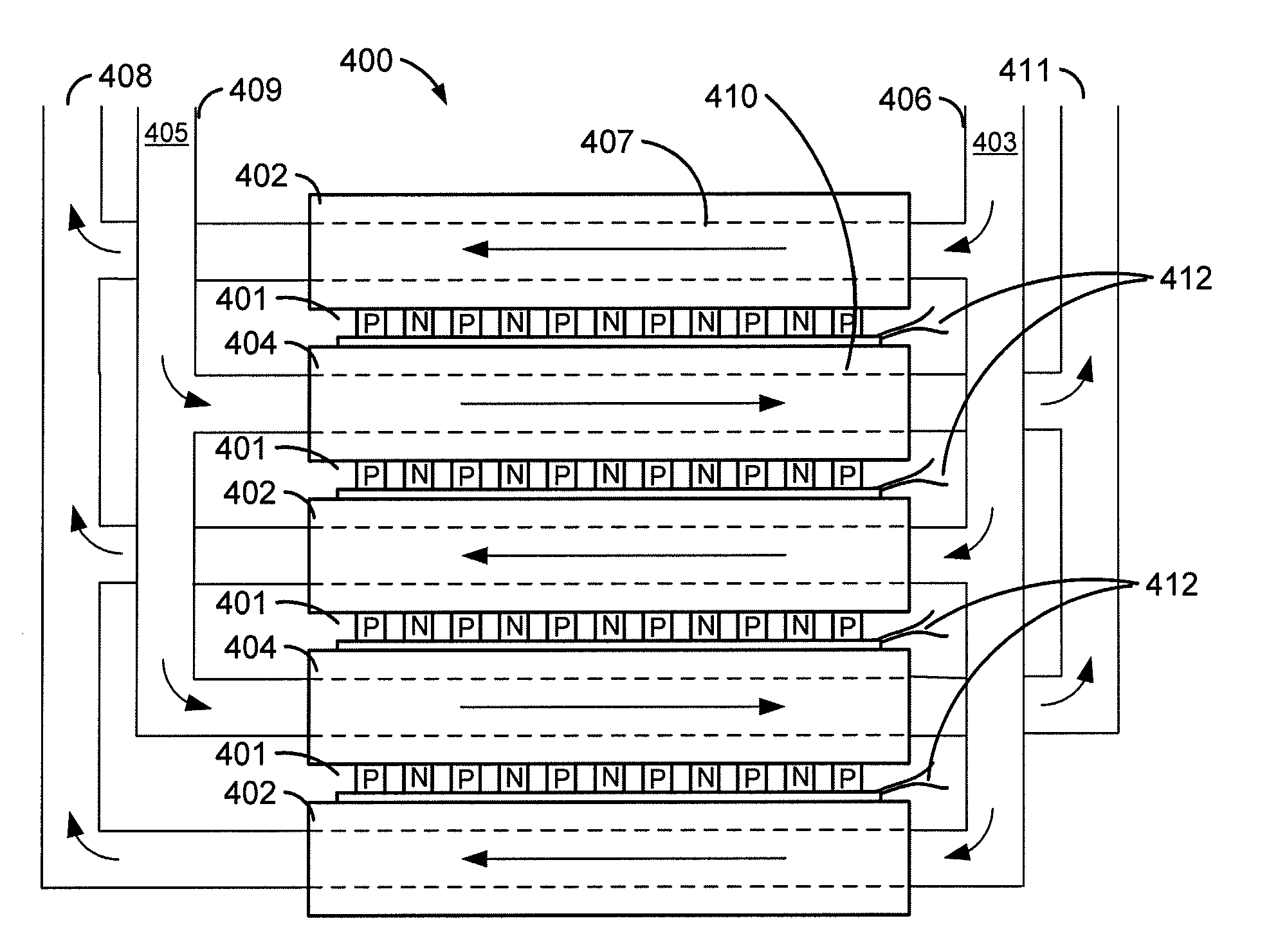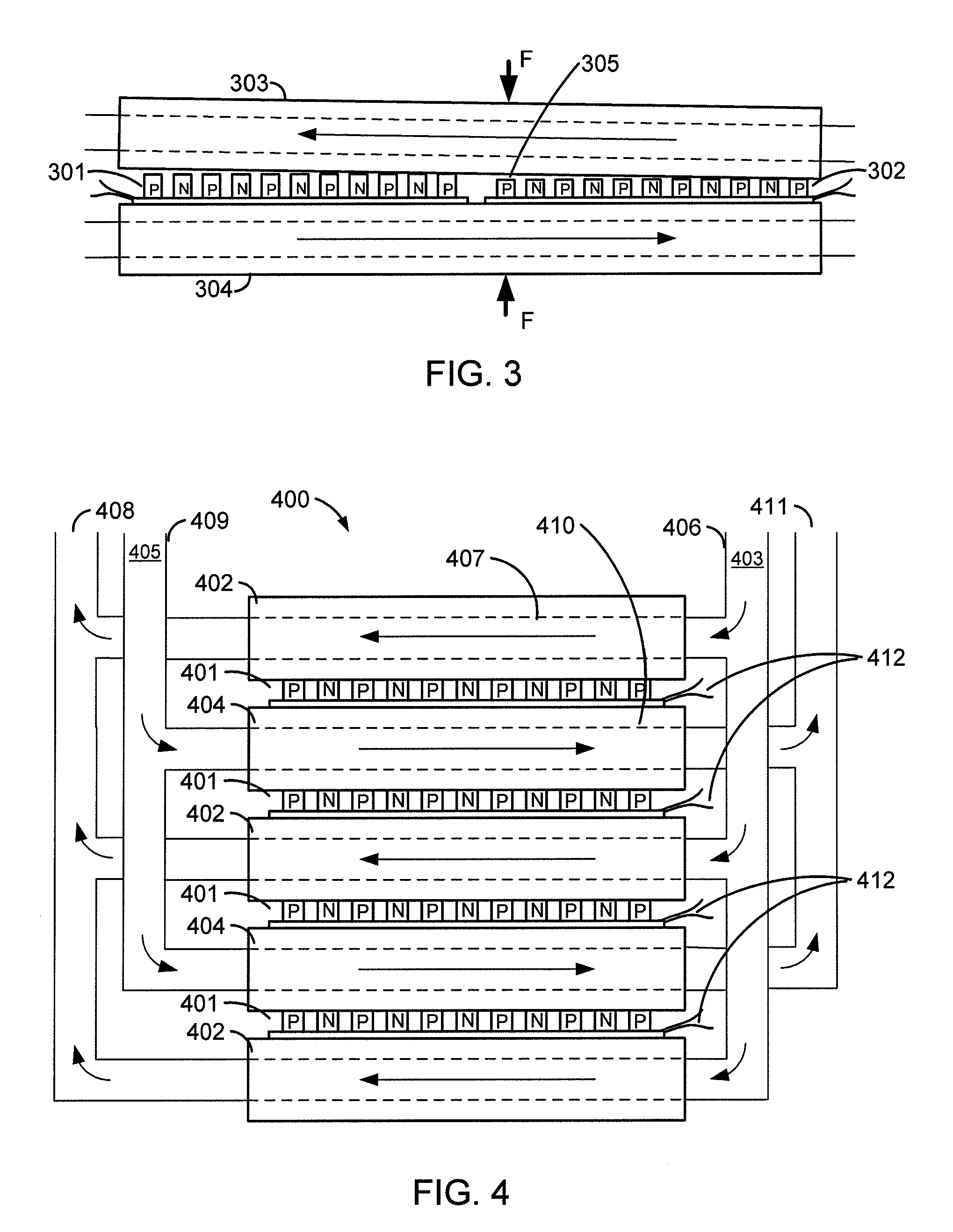Thermoelectric generator
a generator and thermal energy technology, applied in the field of thermal energy modules, can solve the problems of small power requirements in comparison with the power requirements of a typical hom
- Summary
- Abstract
- Description
- Claims
- Application Information
AI Technical Summary
Benefits of technology
Problems solved by technology
Method used
Image
Examples
Embodiment Construction
[0023]Thermoelectric module 100 is but one example of a thermoelectric device usable by embodiments of the invention. Module 100 is made up of a number of thermoelectric elements 104, each of which is a length of conductive or semiconductive material with favorable thermoelectric properties. For example, the elements may be pieces of n-type and p-type semiconductor material, labeled “N” and “P” in FIG. 1. The thermoelectric elements 104 are arranged in thermoelectric couples, each thermoelectric couple including one “N” element and one “P” element. The ends of the elements in each thermoelectric couple are electrically connected at hot side 103 of module 100 by one of conductors 105, and are further thermally connected to a heat source through an optional header 106. The various thermoelectric couples are connected in series at cold side 102 of module 100, by conductors 107, and are also thermally connected to a “cold” source or header 108 at the cold side 103 of module 100. Each th...
PUM
| Property | Measurement | Unit |
|---|---|---|
| Temperature | aaaaa | aaaaa |
| Flexibility | aaaaa | aaaaa |
Abstract
Description
Claims
Application Information
 Login to View More
Login to View More - R&D
- Intellectual Property
- Life Sciences
- Materials
- Tech Scout
- Unparalleled Data Quality
- Higher Quality Content
- 60% Fewer Hallucinations
Browse by: Latest US Patents, China's latest patents, Technical Efficacy Thesaurus, Application Domain, Technology Topic, Popular Technical Reports.
© 2025 PatSnap. All rights reserved.Legal|Privacy policy|Modern Slavery Act Transparency Statement|Sitemap|About US| Contact US: help@patsnap.com



